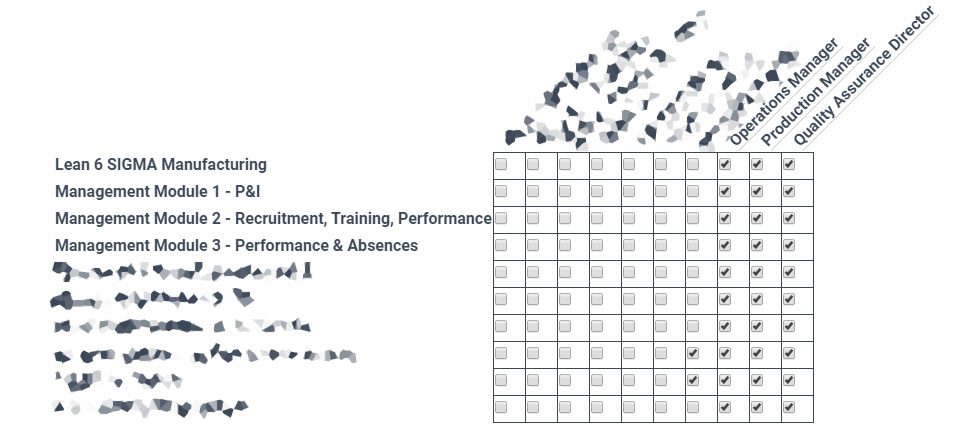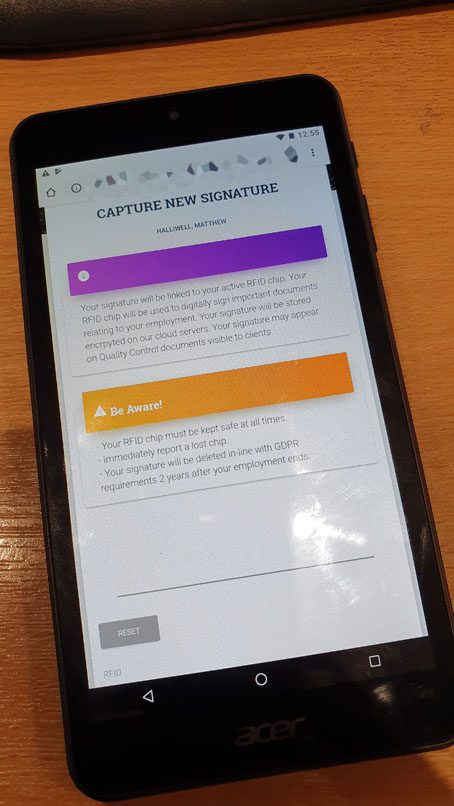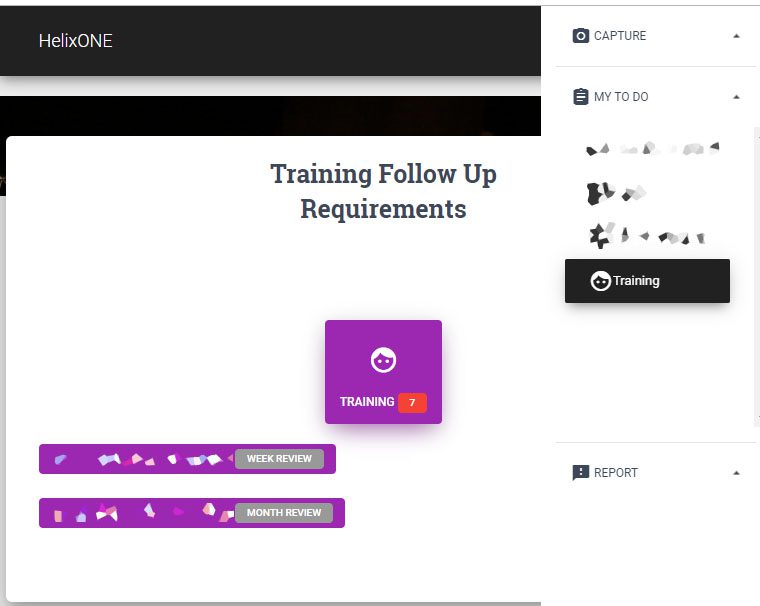
Upon analyzing our old systems, performance management of the team for me was a key weakness. Not because it wasn’t occurring, but because the way the system worked led to inconsistencies in training and highlighting problem areas.
External training wasn’t an issue, documents were checked for skills with expiry dates and logged on the system for renewal at the appropriate time frames. The biggest area of concern was keeping internal training thorough and up to date at all times.
The problem was simple, it was too ‘administration’ heavy. Our former process became bloated:
- We decided the company would have a list of competencies required for each person.
- Each competency would have training associated with it.
- Each training would have documents (slideshows, videos, documents etc) associated with it.
Now, if a document was updated, that would effectively invalidate the competency until the re-training had occurred for all documentation, for each employee. The document log would have to be updated, the change log would have to be updated, the competency matrix updated and the personnel file updated…. The resources required is too great and it needs to be simplified.
HelixHR
The initial step was to provide Directors with the quick ability to create “Titles” and “Categories”. Once these are set, they are done so for a long time, but it has to be editable for scale-ability of the business.
Job Titles (automatically linked to Job Specifications) are set and Competency Categories are created at the click of a button.
To keep the new system simple, we agreed that each Competency will only have 1 piece of thorough training. This results in more competencies overall, but fewer documents to manage and update. We, of course, had to be careful with our planning to ensure the system wasn’t over-simplified as to miss key elements of the training courses.
Once the categories are set, a matrix is automatically generated by the system. This allows the Directors to quickly assign which job titles need to carry certain abilities.

Now that training has been allocated, the next step is to complete and monitor the effectiveness of the training, with as little administration as possible. Our goal here is to spend more time on “training” and less time on form filling and duplication.
An important part of this development was to protect against manipulation by Management (I’m sure they wouldn’t, but I wanted to take away the temptation). My goal is not to just pass audits, but to ensure that the training is actually being completed on-time and is effective. In order to do this, a paper system or “editable” records are no good.
My first step might seem a little paranoid and probably a step too far, but I do not trust signed documents. Signatures can be faked easily (either hand written or on a tablet), and hand written dates could be anything but the date it was actually done. My first step is to capture the employees signature when they start with the company with a copy of their ID.

This is the first step to empowering employees in their responsibilities. Things simply cannot be signed on their behalf. If they do not agree with a document, or feel they haven’t fully understood a training course, they simply do not scan their tags and the record will not be completed. This is a system they can trust.

The next step is to initiate the training. The system simply instructs managers who is due training and at the click of a button the presentation begins. Every single piece of “on the job” training starts with a presentation.
We do this because everyone deserves an equal start. The workshop can be noisy and distracting. The trainee might be anxious if its something entirely new to them, or over-confident if they have done it for other companies. This way, everyone starts in a quiet, safe space where the training can be laid out for them and any issues identified early.
Each presentation commences with “Training Procedures”.
- What are the goals?
- What methods will be used for the training?
- How can the candidate practice their skills?
- What makes the instructor competent?
- What are the benefits to the trainee?
Once the training has been completed, the instructor is presented with a QR code to scan. The code contains all the information relating to the training session and cannot be edited. Both the instructor and the trainee then scan their RFID chips to verify the information, leaving any comments or feedback about the training session for review by the Directors.
As this system is cloud based, the training record is automatically linked to the trainees employment folder, the document log, the training matrix and the change logs with no human intervention required.
The Follow Up
The training is now logged and linked into several other sections of the HelixONE system that we will cover later. All with a simple scan, data we can all trust. But that is not the end of this journey….

The training immediately filters down to the tablets of the Managers and Supervisors for monitoring only showing as and when required. There are 3 key moments.
- A 24 hour review to ensure the trainee is behaving in a safe manner.
- If they fail this stage, the trainee goes back to the training suite.
- A 1 week review to ensure they can demonstrate they understood the correct procedure under supervision.
- If they fail this stage they go back to the 24 hour review or training suite.
- A 1 month review to ensure that there are no recorded quality issues against the procedure and this trainee.
- If the trainee fails this stage, they go back to 1 week supervision.
Every stage must have an RFID scan by the instructor and the trainee. This ensures that not only is the instructor stating they have confidence in the trainees competence, but the trainee is also stating they are comfortable with the training they have received.
Accountability
Everything that just happened, is crucial to another part of HelixONE that we will cover later. The main goal of the above is to identify if training has been effective. If the trainee does not get past the 1 month review (either by the instructor not progressing them, or they do not scan because they do not feel confident with the training they have received), they will not be deemed as competent and therefore are protected from “performance management” in that area. Instead, the training will be reviewed and if deemed satisfactory, the trainee will be allocated to other areas of the business.
This prevents employees from feeling punished in areas they do not believe they have had satisfactory training.
That’s it for this post, but on a side note, I recently had a conversation with a respectable person in the industry about the use of the word “accountability” in an employee facing environment. It was suggested the terminology should be changed to be less, ‘hostile’ I guess and more in-line with “ownership of responsibilities”. I certainly see the point, but as of yet I am undecided on an alternative. What are your thoughts? And do you feel our training specifications are strong? @YorksProfiles

